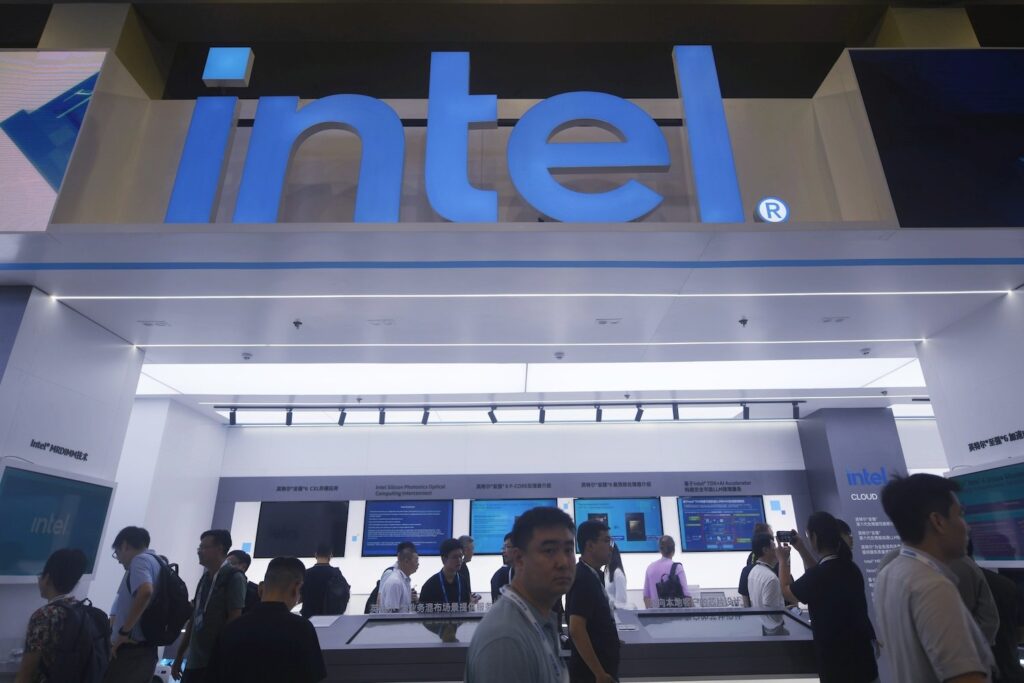It’s safe that say that Intel has seen better days. The chip maker, once a dominant force in Silicon Valley, has missed out on multiple innovation cycles in tech and finds itself trailing behind competitors at just about every turn. The company is in the process of cutting 15,000 jobs and billions of dollars in costs as it hopes to turn things around and become a leading player in chip design and manufacturing again.
But in the meantime, the company’s stock has continued to plummet, down 45% year-to-date and down by more than half in the past five years. That, combined with the aforementioned layoffs and Intel’s general perception as a has-been, is probably having employees feeling pretty down right now. In tech, engineers are often compensated greatly in stock in order to incentivize them to help the company succeed, so the ones who remain aren’t even being paid as much as they used to.
Sticking around is looking like a harder proposition by the day, but thankfully management has devised a way to boost spirits: Free coffee. According to the Oregonian, management told staff this week that free in-office beverages including coffee and tea will be returning to offices. They were previously slashed as part of cost-cutting efforts.
“Although Intel still faces cost challenges, we understand that small comforts play a significant role in our daily routines,” the message read. “We know this is a small step, but we hope it is a meaningful one in supporting our workplace culture.” Maybe next they can introduce some pizza parties?
Intel made it big during the personal computing boom of the 1990s—just about every computer had an “Intel Inside” sticker right on it. But the company passed on making mobile chips for the iPhone, ceding the smartphone market to players like ARM, which designed processors ideal for small battery-powered devices. Though they were long seen as less powerful than Intel’s x86 architecture, ARM processors have narrowed that gap and are now finding their way even into the laptops where Intel has long been dominant. Apple has completely ditched Intel for its own ARM-based processors. Intel also never invested much into GPUs, which are ideal for running the computations involved in generative AI; Nvidia, of course, is the leader there.
It was recently reported that Intel also had an opportunity to invest in OpenAI back in 2018, but former CEO Bob Swan didn’t think generative AI would arrive soon enough to realize a return in a reasonable timeframe. OpenAI is now privately valued at over $150 billion, more than Intel’s market cap of $110 billion.
More recently, Intel has fallen behind competitors to build 7-nanometer chips. Smaller chips generally offer faster processing speeds and lower power consumption for the same level of performance.
The situation goes to show how even the mightiest in tech can see their fortunes evaporate through a series of missteps. That’s probably why all of the big tech players are competing fiercely to plant a flag as leaders in generative AI; so they don’t end up like Intel.
Intel’s Hail Mary now is surviving long enough to receive a lifeline from the government in the form of $8.5 billion in CHIPS Act funding, which it would use to build semiconductor manufacturing plants in the country where it hopes to produce chips for other companies. It would also use the funding to get back to developing cutting-edge semiconductors. The hope is to wean the U.S. off reliance on the likes of TSMC, the cutting-edge semiconductor maker based in Taiwan.
Hopefully, Intel hasn’t found itself in a death spiral where mass layoffs lead to voluntary resignations, which lead to more resignations, and so on and so forth.


